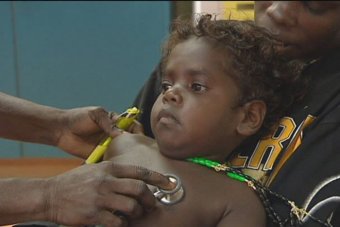Nearly two thirds of Indigenous people die before the age of 65, compared with only 19 per cent of other Australians, but the gap in mortality rates narrowing, a new study shows.
The figures in the latest Australian Institute of Health and Welfare (AIHW) report also show no significant change in suicide rates among Indigenous people, even though there was a 25 per cent drop for non-Indigenous people, and an alarming rise in the gap in incarceration rates.
“Two thirds (65 per cent) of deaths among Indigenous people occurred before the age of 65, compared with 19 per cent of deaths among non-Indigenous people during the five-year period 2008–2012,” the report said.
But the gap in mortality rates between Indigenous and non-Indigenous people did reduce by 17 per cent in the same period, the report found.
“The reduction in the gap was mostly due to a significant narrowing of the mortality gap between Indigenous and non-Indigenous females (30 per cent decline in the rate difference),” the report said.
“By comparison, among males, there was no significant decrease in the mortality gap.”
Under national the Close the Gap national partnership agreement the gap in life expectancy between Indigenous and non-Indigenous Australia is targeted to close by 2031.
But National director of Australians for Native Title and Reconciliation, Andrew Meehan, said the Close the Gap agreement lacked national coordination.
“We have actually seen the Closing the Gap national partnership agreement, the Government hasn’t renewed that,” Mr Meehan told the ABC’s AM program.
“And they haven’t renewed some of the other national partnership agreements under that COAG (Council of Australian Government) Closing the Gap force framework.”
Gap in imprisonment rate at 82 per cent
There was a 16 per cent increase in the cancer death rate for Indigenous people between 1998 and 2012, whereas the rate for non-Indigenous people fell by 10 per cent, the report found.
The report also found an increase in the imprisonment rate of Indigenous people, which has now seen the gap in incarceration levels increase to 82 per cent.
Associate professor Ted Wilkes from Curtin University said that was a “significant embarrassment”.
“Well, it’s just saying that the Governments of the day aren’t listening to the advice that Aboriginal leaders have been putting to forward,” Professor Wilkes said.
“It appears the systems that are meant to look after us, are failing,” he said.
Imprisonment rates are not mentioned in the Closing the Gap agreement.
COAG Closing the Gap targets
- Close the gap in life expectancy within a generation (by 2031).
- Halve the gap in mortality rates for Indigenous children under 5 within a decade (by 2018).
- Ensure all Indigenous children aged 4 in remote communities have access to early childhood education
within 5 years (by 2013). - Halve the gap in reading, writing and numeracy achievements for Indigenous students within a decade
(by 2018). - Halve the gap for Indigenous people aged 20–24 in Year 12 or equivalent attainment rates by 2020.
- Halve the gap in employment outcomes between Indigenous and non-Indigenous Australians within a
decade (by 2018).
Source: National Indigenous Reform Agreement


